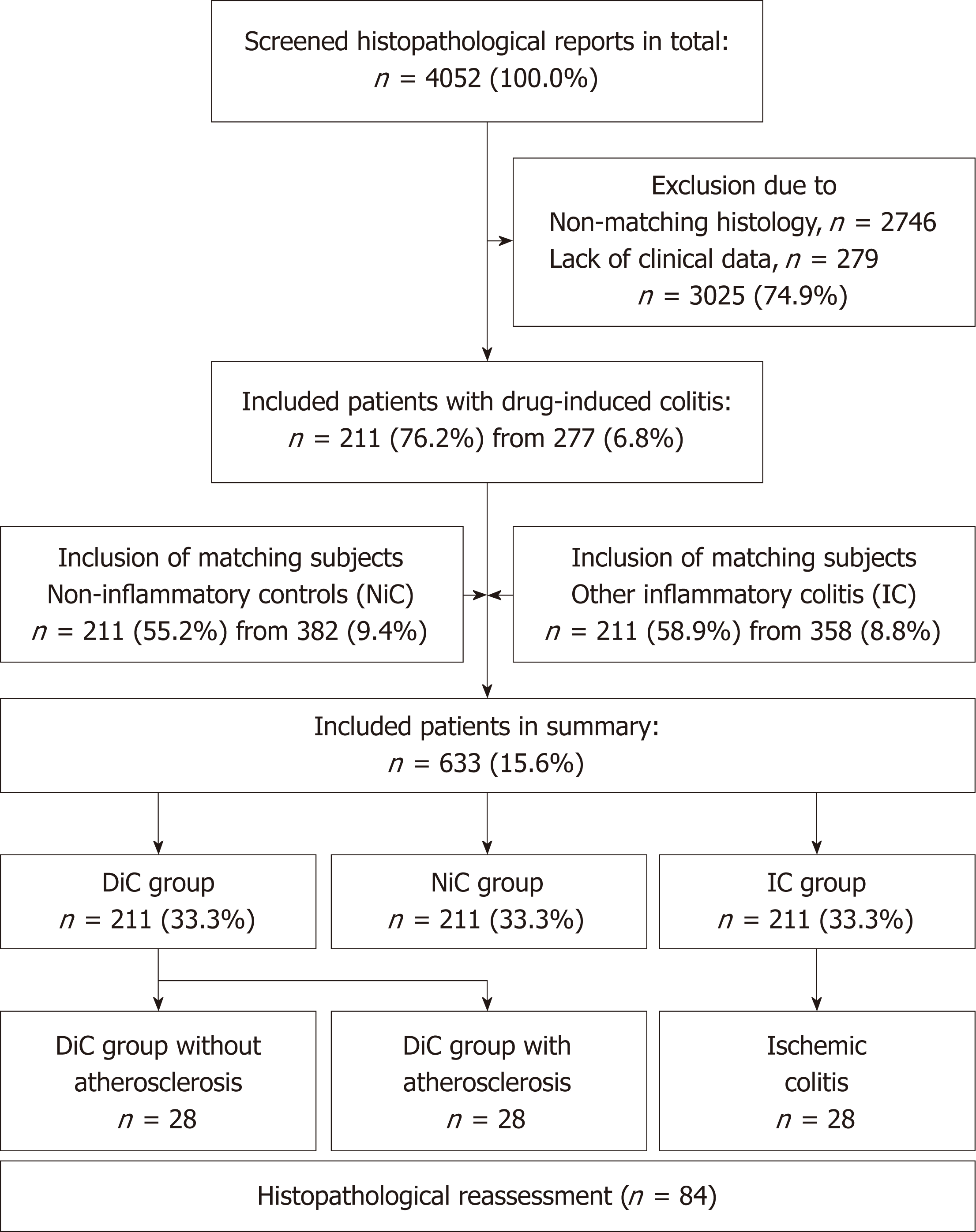Copyright
©The Author(s) 2019.
World J Gastroenterol. Feb 28, 2019; 25(8): 967-979
Published online Feb 28, 2019. doi: 10.3748/wjg.v25.i8.967
Published online Feb 28, 2019. doi: 10.3748/wjg.v25.i8.967
Figure 1 Flow-chart of inclusion.
DiC: Drug-induced colitis; NiC: Non-inflammatory controls; IC: Inflammatory controls.
Figure 2 Histological appearance of drug-induced colitis with atherosclerosis, drug-induced colitis without atherosclerosis, and ischaemic colitis in hematoxylin and eosin stain.
A: Drug-induced colitis (DiC) with atherosclerosis; B: DiC without atherosclerosis; C: Ischaemic colitis. Three different groups of 28 patients each were collected for histological reassessment. DiC with atherosclerosis (A) is characterised by lymphocytic, granulocytic and eosinophilic infiltration (marked with an arrow) while haemorrhage, necrosis is rarely present. In ischaemic colitis, (C) ulcers, necrosis (marked with an arrow), and erosions predominate, and haemorrhage and fibrosis also occur. Eosinophilic infiltrations are rarely seen. DiC without atherosclerosis (B) shows features of both DiC without atherosclerosis and ischaemic colitis. These include haemorrhage, eosinophilic infiltration and erosions (marked with an arrow).
- Citation: Brechmann T, Günther K, Neid M, Schmiegel W, Tannapfel A. Triggers of histologically suspected drug-induced colitis. World J Gastroenterol 2019; 25(8): 967-979
- URL: https://www.wjgnet.com/1007-9327/full/v25/i8/967.htm
- DOI: https://dx.doi.org/10.3748/wjg.v25.i8.967










